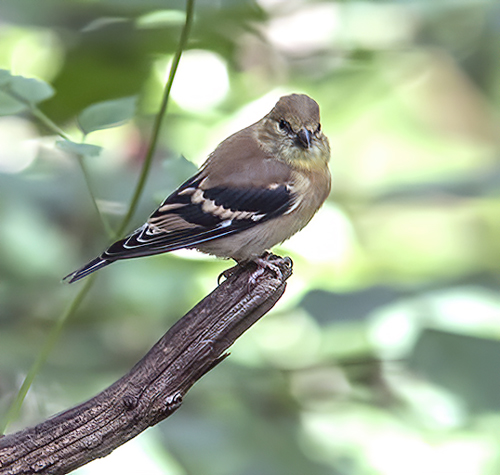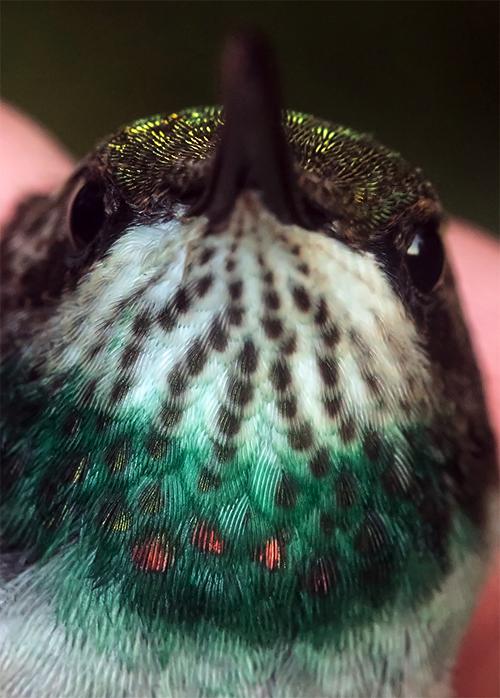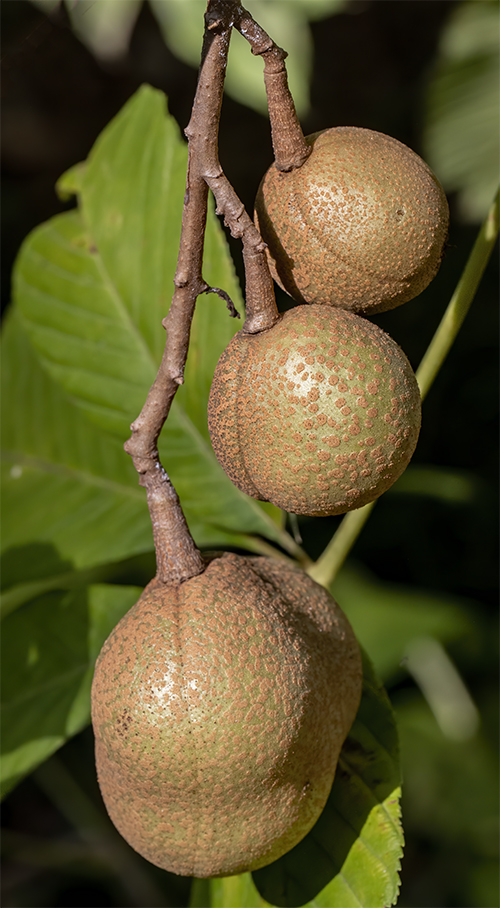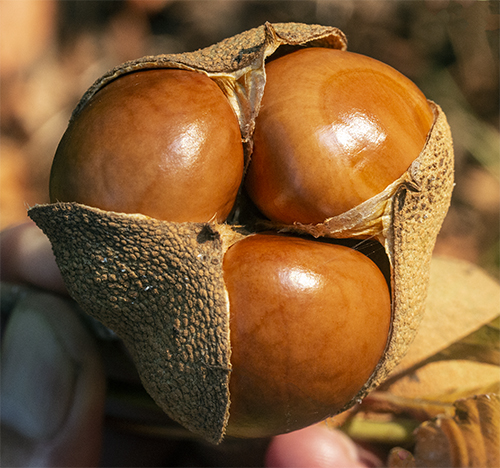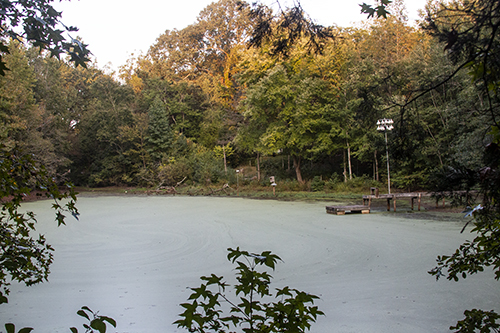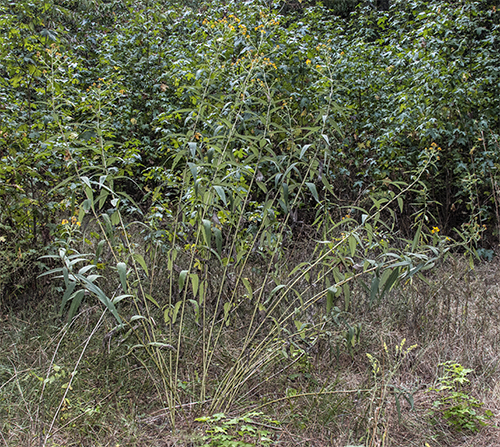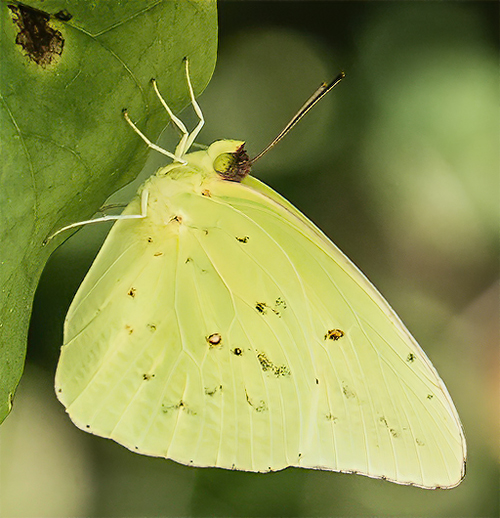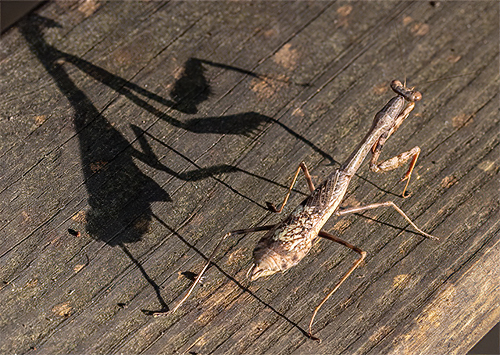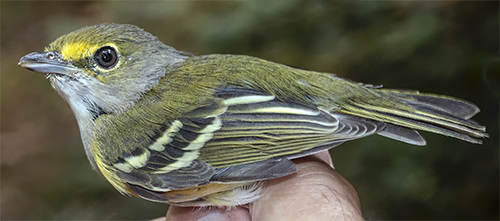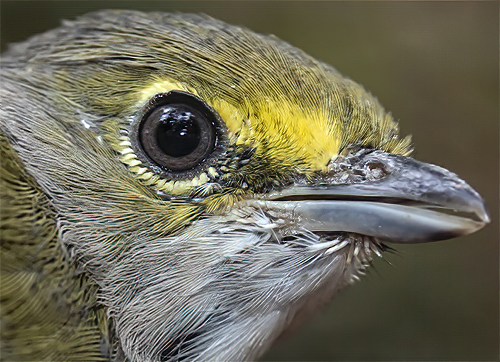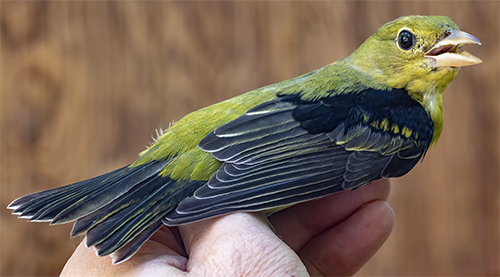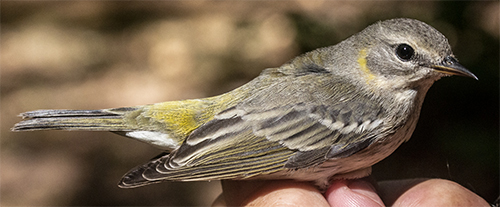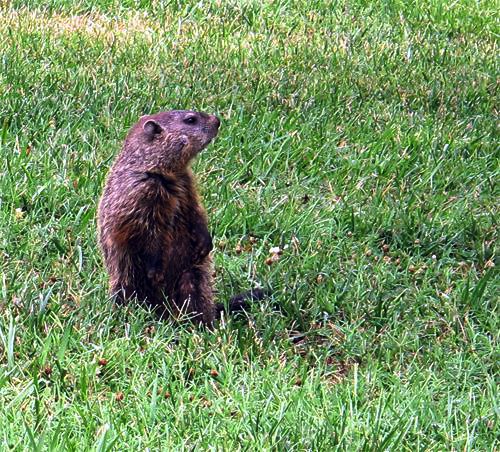- Established 1982 -HOME: www.hiltonpond.org
THIS WEEK at HILTON POND Subscribe for free to our award-winning nature newsletter (Back to Preceding Week; on to Next Week) |
#700--AND MORE TO COME! When the Web site for Hilton Pond Center went live on Groundhog Day in February 2000, one goal was to produce an on-going series of photo essays under the guise of "This Week at Hilton Pond." Little did we suspect that almost 20 years later in September 2019 we would publish our 700th installment! Although we haven't posted every single week, we've never gone long without putting up an account of nature happenings around Hilton Pond--and occasionally at far-flung sites we've visited from Wisconsin to West Virginia and Costa Rica to California. We've worked hard to make every issue informative AND entertaining, providing site visitors with scientifically accurate information about flora and fauna they might even encounter in their own backyards in the Carolina Piedmont--and elsewhere.
All text, maps, charts & photos © Hilton Pond Center Often, wordsmithing has been relatively easy compared to getting photos to illustrate our commentary, but we always enjoy the challenge of stalking around with camera at the ready while seeking a complementary image--like the quick shot above of a recently fledged male American Goldfinch with the very dark (not orange) bill of a young bird. Although AMGO are our most commonly banded bird at the Center--11,465 since 1982--we capture the vast majority of them in winter. Not until the past decade or so have goldfinches regularly occurred here in pairs during summer months--perhaps an indication they are expanding their primary breeding range southeastward across the Carolina Piedmont.
All text, maps, charts & photos © Hilton Pond Center September at Hilton Pond was a mostly typical month--well, except for unreasonably high temperatures and a complete lack of rain--including our usual encounters with diverse wild plants and wildlife. That said, stifling heat on many days made it too hot to run mist nets to capture birds, and our Ruby-throated Hummingbirds appeared in abysmally low numbers throughout the summer--our fewest since 2013--even though September is usually our prime hummer banding month. Our last new hummer of 2019 (a young male, above, with partial red gorget) was banded, color-marked, and released on 26 September, and we don't expect many or any in October (only 81 in the past 36 years, the latest on the 18th).
All text, maps, charts & photos © Hilton Pond Center Although ruby-throats were sparse this year around Hilton Pond, there was indirect evidence they were present and going about their business as nectar-eaters: Our two small Red Buckeyes, Aesculus pavia, were loaded with their heaviest-ever nut crop. This native shrub/tree, which blooms early in the year before many nectar-bearing flowers are available, is a hummingbird favorite. We highly recommend it to folks for backyard planting from Illinois south.
All text, maps, charts & photos © Hilton Pond Center Inside each Red Buckeye husk we usually find a cluster of two or three nuts (above). Unlike the more familiar Ohio Buckeye, A. glabra, with dark reddish-brown fruits, the one-inch-diameter nuts of Red Buckeye are a rich yellow-orange in color. Plentiful fruit this September at the Center suggest nectar-loving hummers did do a thorough job pollinating last spring.
All text, maps, charts & photos © Hilton Pond Center September 2019 has been an exceptionally hot and dry month, with scarcely a drop of rain falling on Hilton Pond Center. We speculate only a uniform, thin layer of Rootless Duckweed on its entire surface has kept the pond itself from evaporating away (see photo above). On a few occasions, surrounding communities benefited from pop-up thunderstorms, but not us; it's dry as a bone, with leaves wilting on trees, vines, and herbaceous plants. Even undesirable and seemingly immortal invasives such as Vinca (Periwinkle), Russian Olive, and Chinese Privet are succumbing to the effects of high heat and no rain.
All text, maps, charts & photos © Hilton Pond Center When local summer droughts extend into September at the Center we're always concerned one of our most cherished plants will suffer from lack of water, so we make near-daily visits to a little meadow wherein grows our single, multi-stemmed specimen of Schweinitz's Sunflower, Helianthus schweinitzii (above). This late-blooming seven-foot-tall composite is federally endangered, among the last of a once vigorous population that was an indicator species for the Piedmont Prairie. Yes, Piedmont Prairie. In the past 10,000 years, the counties around Mecklenburg where Charlotte NC now sits were home to grasslands quite quite similar to the vast prairies of the Midwestern U.S., but with scattered oaks and pines. Rampant commercial and residential development has changed the landscape drastically, and only a few pockets of this unique habitat remain.
All text, maps, charts & photos © Hilton Pond Center Schweinitz's Sunflower is now a plant of "prairie-like" roadsides and power line cuts, where it ekes out an existence despite assaults by mowing and frequent herbicide application to keep rights-of-way clear. (We've tried to explain the problem to power companies and highway departments, but you know how THAT usually goes.) It's a sad story, and to make sure our lone Hilton Pond sunflower survives in blistering weather like this we tote a five-gallon jug of water a couple of hundred yards on a near-daily basis to quench its thirst. Fortunately, efforts this year have worked. Within hours of getting drenched the stems and leaves of our Schweinitz's Sunflower become turgid as its tuberous roots drink up moisture. Our reward has been a nice array of one-inch golden, endangered blooms (above) that grace our meadow while September wanes.
All text, maps, charts & photos © Hilton Pond Center For many insects at Hilton Pond Center, September is when their lives as individuals come to an end, having metamorphosed from egg to larvae (or nymph) and eventually to adult. The real function of the adult, of course, is to reproduce. In some insects adults don't even feed and spend their entire time looking for mates with which to copulate; it is only the immature stage that munches on vegetation and, sometimes, on other insects. However, for the Cloudless Sulphur butterfly, Phoebis sennae (above), the adult is long-lived and visits more or less tubular flowers whose nectar fuels a autumn migration to more southerly climes as far as Florida. The adults fly back in spring to their natal sites to breed, a behavior matched by few other insects that migrate long distances.
All text, maps, charts & photos © Hilton Pond Center Because they migrate just a few feet above the ground, many Cloudless Sulphurs fall victim to motor vehicles, while others perish due to habitat loss and insecticides. One natural enemy around Hilton Pond is the Carolina Mantid, Stagmomantis carolina (above), a three-inch-long native predator that can make short work of a bright yellow butterfly about its size. This mantid--camouflaged by a quilt-like pattern on its wings--lies in wait near a flower until an adult insect flutters by; the mantid then lashes out with spike-studded forelegs--visible in its menacing shadow above--and draws its prey close while pinching it to death. Such skillful hunting assures the female mantid of a good source of fats and proteins she needs to lay healthy eggs within a weatherproof egg case that lasts the winter. (NOTE: We hear often how "dangerous" praying mantids are to hummingbirds. Although much larger European and Chinese Mantids do rarely attack and kill hummers, our petite Carolina Mantid is hardly a risk. If mantids concern you, simply move them to a spot away from nectar flowers and sugar water feeders that might attract hummingbirds.)
All text, maps, charts & photos © Hilton Pond Center With September at hand at Hilton Pond Center, we try to run mist nets as much as possible, hoping to catch migrants as well as residents such as the White-eyed Vireo above. In spring, birds of this species are easily identified just by eye color, but in autumn folks sometimes are misled when they see a dingy-eyed immature like the one in the photo above. Never fear; the other field marks give it away, including yellow lores, white eye ring, dual white wing bars, and mostly gray head, neck, and throat. (It helps when you hear this vireo's repetitive song that begins and ends with an explosive chip.)
All text, maps, charts & photos © Hilton Pond Center Change in iris color from fledgling to adult is fairly common among birds. In White-eyed Vireos, the eye of the youngster is grayish-brown (as shown above), but this changes to brilliant white in most individuals before the next breeding season begins. In some bird groups--many hawks, for example--the iris may take three or more years to go from yellow to orange to clear red. All these eye colors are typically caused by a combination of light diffraction sand crystalline pigments such as carotenoids and purines.
All text, maps, charts & photos © Hilton Pond Center Although Summer Tanagers occur spring through fall at the Center and breed here, their dark-winged relative, Scarlet Tanager, hits our mist nets only in spring and fall migration. (NOTE: There are scattered breeding records for Scarlet Tanager in the northern third of South Carolina; even so, the species nests much more frequently in North Carolina, and beyond.) Adult male Scarlet Tanagers are unmistakable with crimson bodies and black wings; both females and young males have greenish-yellow bodies with dark wings, but the immature male often begins to bring in blacker wing coverts prior to fall migration. The hatch-year male above is a little unusual in that his new lesser secondary coverts have yellow centers that usually are jet black; we have no explanation. An interesting characteristic of tanagers shows in the photo: A tooth-like projection about halfway back on the biting edge of the upper mandible. We suspect this "tooth" enhances a tanager's insect-killing ability.
All text, maps, charts & photos © Hilton Pond Center Among the Wood Warblers we capture around Hilton Pond, the one we think has the most striking face is the Northern Parula (above), with broken eye ring, blue-gray cheek, olive crown, bi-colored bill, and yellow throat with (in the male) more or less chestnut shading. The parula is the smallest eastern warbler at 3-3/4" bill to tail, while the biggest--Louisiana Waterthrush--comes in at 5-1/4". (NOTE: The Yellow-breasted Chat, which measures a whopping 6-1/4", was considered to be the largest warbler, but taxonomists now place it in its own family, the Icteriidae. Don't confuse this with the Icteridae--one "i"--the Blackbird Family.) At the Center we encounter Northern Parulas primarily during fall migration; however, captured females with brood patches indicate they must be nesting locally--likely in clusters of dead leaves high in the canopy.
All text, maps, charts & photos © Hilton Pond Center Although the bird in the photo above has a streaked breast and a yellow rump, it's not a pale-looking Yellow-rumped (Myrtle) Warbler we caught in late Sepetmber at Hilton Pond Center. In fact, a quick look at its face shows a yellow auricular (ear ptch) that, with other characters, is diagnostic in autumn for an immature Cape May Warbler; this one is likely a female, based on overall pale markings and lack of the prominent white wing patch found in males. The Cape May is indeed related to the Yellow-rumped Warbler--they're in the same genus (Setophaga), as is a third yellow-rumped species, the Magnolia Warbler. None of these three breeds in the Southeast, and only the Yellow-rumped Warbler is regularly encountered here in winter. The Cape May Warbler above was our 111th banded at the Center since 1982, with 85% of them captured during September and October.
All text, maps, charts & photos © Hilton Pond Center As we were putting finishing touches on this September 2019 installment of "This Week at Hilton Pond," we took one last stroll down to the meadow to see how our Schweinitz's Sunflower was doing in the ever-lengthening drought. Upon approach we could see the plant was still perky from our previous day's watering, but on closer examination we spotted a rather large insect. After writing earlier in this photo essay about the diminutive Carolina Mantid, we had just discovered a five-inch-long Chinese Mantid (above), in prayerful posture below a sunflower blossom. Its size and the green edging on this mantid's non-membranous forewing were definitive, so we knew it was Tenodera sinensis, introduced accidentally to North America near Philadelphia in 1896. The species has done exceptionally well since and is found in much of the contiguous United States, where one can find fat-abdomen fall females looking for a final meal before depositing a tan-colored Styrofoam-like ootheca containing up to 300 eggs. Even though we see many Carolina Mantids each year, we report excitedly this Chinese Mantid--although invasive--was another new species for Hilton Pond Center!
All text, maps, charts & photos © Hilton Pond Center And so, after all these years, discoveries continue at the Center--a Giant Swallowtail butterfly last month and then the Chinese Mantis in September were both new to our insect lists. When we posted our first "This Week at Hilton Pond" installment 'way back on Groundhog Day 2000 (Groundhog above), we had already inventoried a sizable list of birds and other wildlife--plus local plants, flowering and otherwise--to be described on-line. The word "blog" (short for "Web log") had just recently been invented, and there weren't many "nature blogs" on the World Wide Web. It wasn't uncommon back then for each of our installments to get 5,000 or more hits within a week of publication. Eventually, however, other competent and knowledgeable blogger naturalists began posting to the Web--and then came time-gobbling Facebook and Twitter that seem to have siphoned off many potential visitors. Now, alas, 500 is a typical hit number for one of our photo essays--a mere 10% of the "good old days." That's disappointing for us because environmental education is our bag; we hope to reach as many young people and adults as possible with our weekly message--especially since relatively little information about ecology of the Carolina Piedmont Region is available on-line. The good news is ALL our photo essays are archived on the Hilton Pond Web site and remain accessible via Google searches. We're always gratified to hear from students that one of our write-ups saved the day on a difficult homework assignment!
All text, maps, charts & photos © Hilton Pond Center Regardless of the number of visitors to the Center's Web site, every one of our first 700 installments of "This Week at Hilton Pond" has been a labor of love and a real joy to write, photograph, and publish. Do let us know if you find these photo essays to be entertaining or informative, and please continue to spread the word. Rest assured it is our intent that many more installments will follow in weeks and months and years to come. Happy Nature Watching! All text, maps, charts & photos © Hilton Pond Center
Checks also can be sent to Hilton Pond Center at: All contributions are tax-deductible on your Don't forget to scroll down for Nature Notes & Photos, |
|---|
|
"This Week at Hilton Pond" is written and photographed by Bill Hilton Jr., executive director of Hilton Pond Center for Piedmont Natural History
|
|
|
Please refer "This Week at Hilton Pond" to others by clicking on this button: |
|

